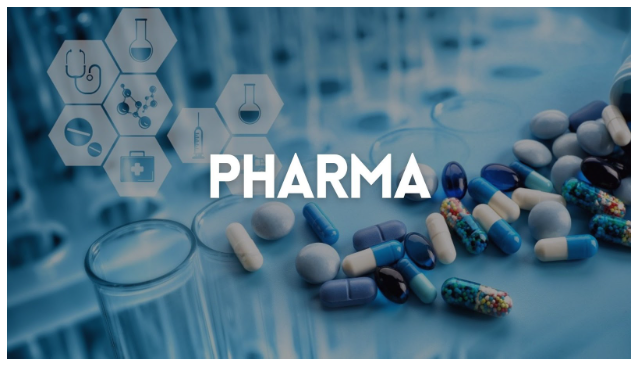Talc in the Pharmaceutical Industry

Talc, a naturally occurring mineral known for its softness and versatility, has found its way into various industries, with pharmaceuticals no exception. In this article, we will explore the multifaceted role of talc in the pharmaceutical sector, delving into its properties, applications, regulatory aspects, and prospects.
Talc Properties and Characteristics
Talc is a mineral known for its softness and is commonly used in various industrial applications. Chemically, it is a hydrated magnesium silicate with the chemical formula Mg3Si4O10(OH)2. One of its primary characteristics is its Mohs hardness of 1, making it the softest mineral known, allowing it to be easily scratched by other minerals.
Talc has a pearly luster and a white to light green or gray color, but it can also be found in shades of brown, pink, and other colors depending on the impurities present. It possesses excellent lubricating and anti-stick properties, making it an essential ingredient in the production of talcum powder, cosmetics, and pharmaceuticals.
With a slippery feel, talc is hydrophobic, meaning it repels water. This property, coupled with its chemical inertness, makes it an ideal material for use in various industries, including producing plastics, rubber, ceramics, and paints. Talc deposits are often associated with metamorphic rocks, and major deposits can be found worldwide, contributing to its widespread industrial use. Despite its versatility, concerns have been raised about potential health risks associated with talc, particularly when used in certain products, leading to ongoing research and regulatory scrutiny.
Talc Manufacture and Sources
Talc is a naturally occurring mineral known for its softness and lubricating properties. The primary sources of talc are metamorphic rocks, such as serpentine, olivine, and pyroxenes, where talc deposits form through the alteration of these rocks over geological time. The transformation occurs under high pressure and temperature conditions, leading to the creation of talc deposits that can be mined.
The process of talc manufacture involves mining the raw talc ore and then processing it to meet various industrial specifications. Mining operations typically involve extracting talc-bearing rocks from open-pit mines or underground mines. The extracted ore undergoes milling, where it is crushed, ground, and sorted into various particle sizes. This process is crucial in achieving the desired properties for different applications.
Talc finds extensive use in industries such as cosmetics, pharmaceuticals, plastics, and ceramics. In cosmetics, it is a common ingredient in talcum powder and other personal care products due to its ability to absorb moisture and provide a smooth texture. In pharmaceuticals, talc is utilized as a lubricant in tablet manufacturing, facilitating the production process and improving drug formulation.
While talc is a versatile mineral, its use has been the subject of scrutiny in recent years due to potential asbestos contamination in certain talc deposits. Asbestos-free talc is considered safe for use in various products, and efforts within the industry focus on ensuring the purity of talc through rigorous testing and quality control measures.
The Versatile Role of Talc in Pharmaceuticals
Talc as a Pharmaceutical Excipient
One of the primary applications of talc in pharmaceuticals is as a pharmaceutical excipient. Excipients are inactive substances that are added to drug formulations to enhance stability, bioavailability, and other critical characteristics of the final product. Talc is particularly valued for its lubricating properties, which can aid in the manufacturing of tablets and capsules.
Tablet Manufacturing
During the tablet compression process, talc serves as a lubricant by reducing friction between the tablet’s surface and the punch and die surfaces of the tablet press. This lubricating effect ensures smooth tablet production, prevents sticking to the machinery, and helps maintain the integrity of the tablets. Additionally, talc acts as a glidant, improving the flow properties of the powdered drug blend, thereby facilitating uniform tablet content and weight.
Capsule Formulation
Talc’s lubricating properties are also exploited in capsule manufacturing. When used as a lubricant in the formulation of capsule shells, talc aids in the smooth encapsulation of the drug, ensuring uniform distribution within the capsule. This is crucial for achieving consistent drug release and bioavailability.
Talc as a Diluent
Beyond its role as a lubricant, talc finds application as a diluent in pharmaceutical formulations. As a diluent, talc contributes to the bulk of the tablet or capsule, helping to achieve the desired size and weight. Its inert nature makes it compatible with a wide range of active pharmaceutical ingredients (APIs) without interfering with their stability or efficacy.
Topical Formulations
Talc is also employed in topical pharmaceutical formulations, such as creams and ointments. Its soft and smooth texture makes it an ideal component for enhancing the feel and spreadability of these formulations. In dermatological products, talc can impart a silky touch to the skin, improving the overall user experience.
Liquid Formulations
In addition to its role in solid dosage forms, talc has applications in liquid formulations. It is used as a suspension aid, helping to prevent the settling of particles in suspensions. Talc’s ability to form stable suspensions ensures that the active ingredients are evenly distributed throughout the liquid, facilitating accurate dosing and administration.
Oral Powders and Effervescent Granules
Furthermore, talc is utilized in the production of oral powders and effervescent granules. Its flow-enhancing properties contribute to the uniform dispersion of powder particles, ensuring accurate and reproducible dosing. The use of talc in effervescent formulations can also enhance the effervescence process, leading to improved dissolution and bioavailability of the active ingredients.
Medical Devices
Apart from its direct role in drug formulations, talc is employed in the pharmaceutical industry for its role in the manufacturing of medical devices. Talc is used as a release agent in the production of certain medical gloves, facilitating their easy removal from molds during the manufacturing process. The use of talc in this context helps to prevent sticking and tearing of the gloves, ensuring their integrity and usability.
Quality Standards
It’s important to note that the pharmaceutical industry adheres to stringent quality standards, and the talc used in pharmaceutical applications must meet pharmaceutical-grade specifications. This ensures that the talc is free from contaminants that could compromise the safety and efficacy of the pharmaceutical products.
Talc Safety and Risks
Talc, a naturally occurring mineral, has been used for various purposes for centuries. Commonly known for its use in cosmetic and personal care products, talc has recently come under scrutiny due to concerns regarding its safety. This controversy primarily revolves around the potential health risks associated with talc, particularly its link to ovarian cancer and respiratory issues. It’s essential to explore the available evidence and perspectives to gain a comprehensive understanding of talc safety.
1. Cosmetic Use of Talc
Talc is widely used in cosmetic products, including baby powder, as it has excellent moisture-absorbing properties. The controversy began when studies suggested a possible association between talc use in the genital area and an increased risk of ovarian cancer in women. However, the evidence is not conclusive, and further research is needed to establish a direct causal link.
2. Ovarian Cancer Concerns
Several studies have investigated the potential connection between talc use in the pelvic region and ovarian cancer. While some studies have reported a modestly increased risk, others have found no significant association. The International Agency for Research on Cancer (IARC) classifies talc used in the genital area as “possibly carcinogenic to humans,” acknowledging the need for more research to draw definitive conclusions.
3. Respiratory Risks
Talc is also associated with respiratory risks, particularly when inhaled. Prolonged exposure to airborne talc particles, such as those released during the mining and processing of talc, can lead to respiratory issues, including inflammation and lung damage. Workers in talc-related industries are at a higher risk, emphasizing the importance of workplace safety measures.
4. Asbestos Contamination
One of the primary concerns surrounding talc safety is the potential contamination with asbestos, a known carcinogen. Asbestos is a naturally occurring mineral that often forms alongside talc deposits. Strict quality control measures are implemented in talc mining and processing to minimize asbestos contamination. The U.S. Food and Drug Administration (FDA) monitors cosmetic products for asbestos and has taken action when contamination is detected.
5. Regulatory Oversight
Regulatory bodies play a crucial role in ensuring the safety of talc-containing products. In the United States, the FDA regulates cosmetics and requires manufacturers to ensure their products are free of harmful contaminants, including asbestos. Despite these measures, concerns persist, and there have been calls for stricter regulations and increased transparency in labeling to inform consumers about potential risks.
6. Legal Implications
Talc-related lawsuits have gained attention, with some individuals claiming that long-term talc use contributed to their development of cancer. Several high-profile legal cases have resulted in significant financial settlements. While these legal outcomes may suggest a connection between talc and adverse health effects, it is essential to note that legal decisions are based on various factors, including individual circumstances and evidence presented in court.
Conclusion
In conclusion, talc’s role in the pharmaceutical industry is far-reaching and dynamic. As we navigate through its properties, applications, regulatory landscape, and prospects, it becomes evident that talc is more than just a mineral—it’s a valuable ally in drug development.



